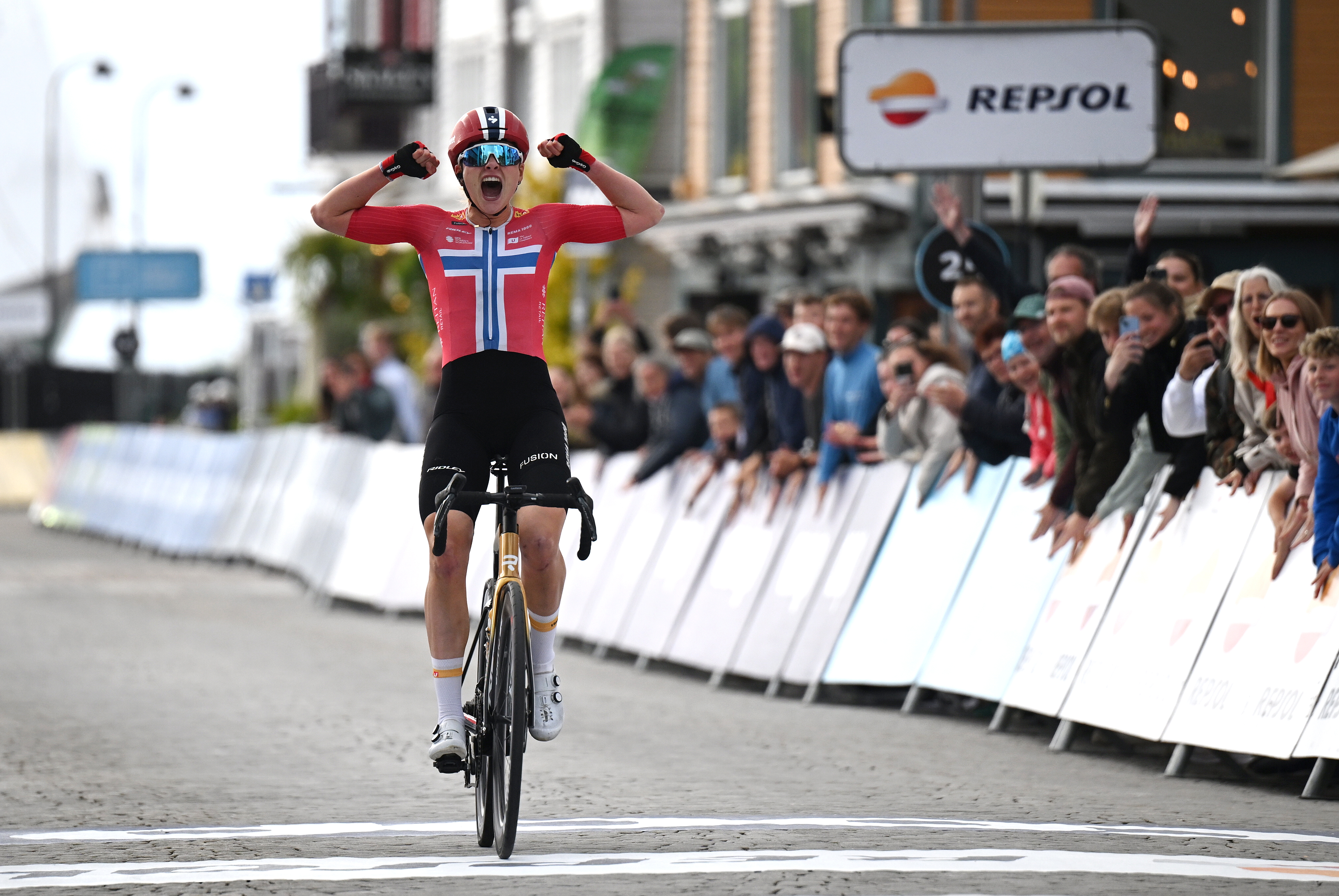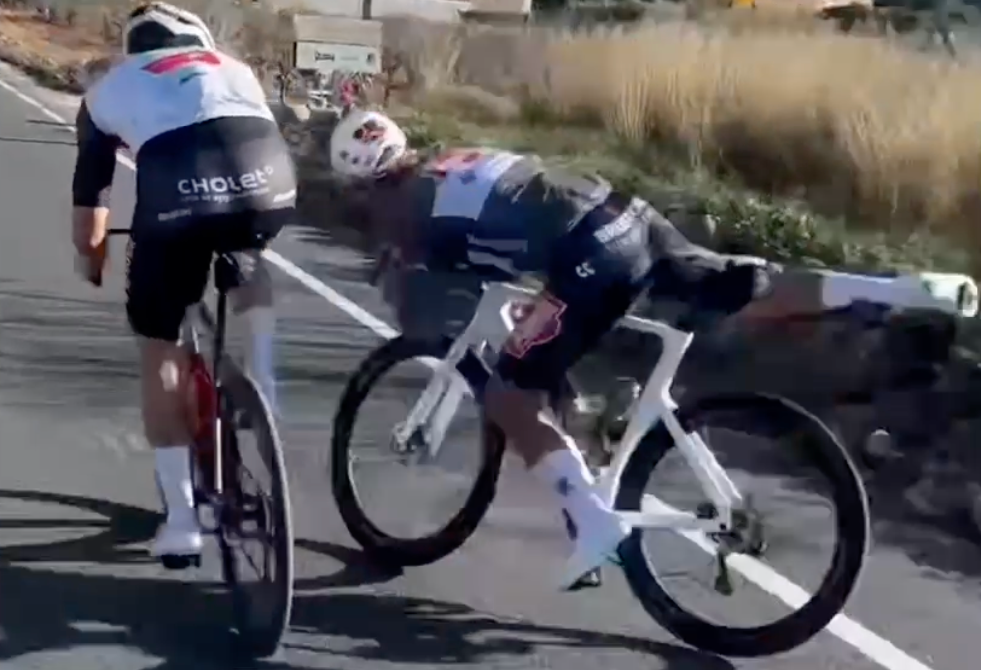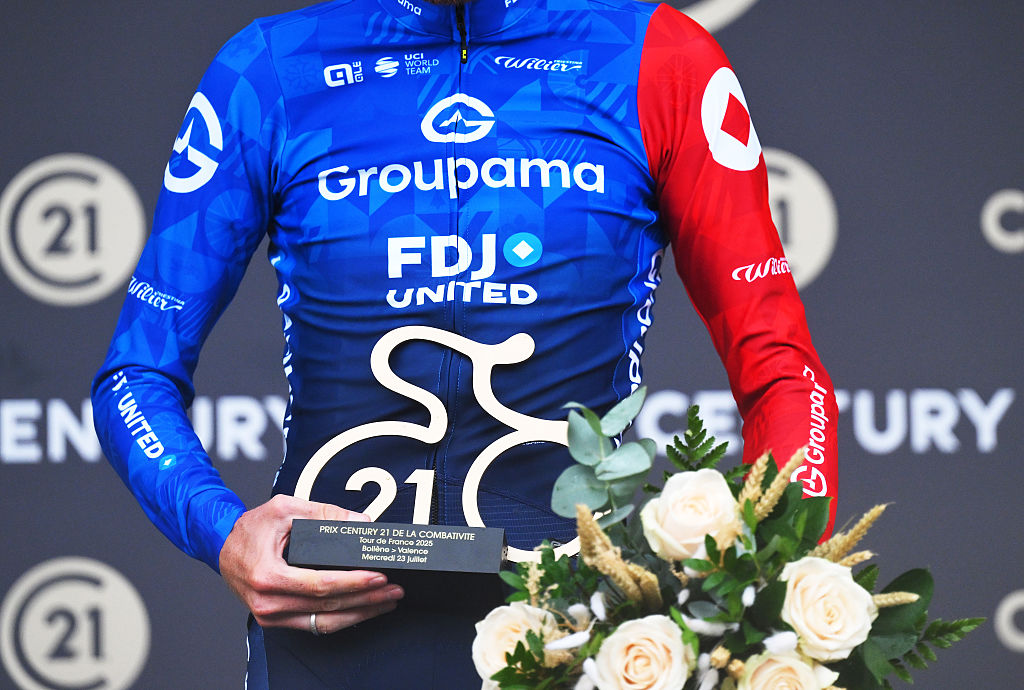Tour de France stage 19 preview - Col de la Bonette key if Vingegaard is to wrest Tour de France from Pogačar's grasp
'Anything can happen' in high-altitude, high-stakes day in the Alps - July 19, 2024: Embrun - Isola 2000, 144.6km

"I'm gone, I'm dead." The words keep cropping up among the Danish crowds on the roads of this Tour de France, emblazoned on t-shirts and banners. On the climb to Superdévoluy the other day, one roadside campervan had the legend displayed prominently for the passing peloton to see. It wasn't clear if it was intended as a warning to Tadej Pogačar or an exhortation to Jonas Vingegaard. Either way, it served as a reminder: the 2024 Tour de France isn't over just yet.
In the past two Julys, Vingegaard availed of the highest mountain of the Tour to break Pogačar's resistance. In 2022, he and his then-teammate Primož Roglič unleashed the devastating onslaught on the Galibier that led to Pogačar's eventual collapse on the Col du Granon. Twelve months ago, Pogačar conceded the Tour to his rival on the Col de la Loze, with the laying down of arms immortalised by the words that crackled over the radio to his teammates: "I'm gone, I'm dead."
When the 2024 Tour de France route was unveiled last October, the imposing final triptych of stages drew much of the attention. Moving the grand finale from Paris to Nice due to the Olympic Games presented ASO with something of a blank canvas, and they seized the chance to be creative, placing summit finishes at Isola 2000 and the Col de la Couillole ahead of the final time trial to Nice.
Back then, it seemed that the broad brushstrokes of the route were in a colour scheme that matched Vingegaard's powers of endurance better than Pogačar's explosive qualities. In 2023, after all, Vingegaard had made a point of insisting that his strategy was based around outlasting his rival in the third week, and one imagines he had a similar vision for the 2024 Tour when he began his planning in the depths of last winter.
However, the fine details look rather different at this close removal. Vingegaard enters the final three days of the Tour 3:11 behind a Pogačar who has scaled new heights of performance during his remarkable 2024 season. The Slovenian's crushing Giro d'Italia victory had suggested as much, and the confirmation has come in July, most notably with his triumph at Plateau de Beille on stage 15. On that form, it's hard to see who can match him over the Col de la Bonette on stage 19 and beyond.
Vingegaard offers rather fewer guarantees. His Tour build-up was obviously complicated by the severe injuries he sustained in the mass crash at Itzulia Basque Country in April. Although he raised Danish hopes by catching and beating Pogačar at Le Lioran, he has since shipped heavy back-to-back losses to his rival in the Pyrenees.
Opinion is divided, too, as to whether Vingegaard's interrupted Tour build-up will leave him short of the base endurance required for the dying days of a race like this. The handful of seconds he conceded at Superdévoluy on stage 17 certainly marked a striking change from his usual, unflinching reliability at this point of a Grand Tour.
The latest race content, interviews, features, reviews and expert buying guides, direct to your inbox!
"Jonas is confident that he is still strong," Visma-Lease a Bike directeur sportif Frans Maassen told Cyclingnews in Gap on Thursday. "Maybe Wednesday was a bit worse day for Jonas compared to the other days, but on the other hand, he still took two minutes on João Almeida and co, so if you can do that then you are still really strong."
The numbers already bear out that view. Pogačar understandably claimed all the headlines at Plateau de Beille last Sunday, not least for putting an estimated 3:40 into the previous record on the ascent, but Vingegaard was himself more than two minutes quicker than Marco Pantani's 1998 mark. From the outside, it's hard to shake off the impression that Vingegaard, Itzulia crash notwithstanding, is producing higher power numbers on this Tour than he did in the past two Julys.
"That could be the case," Maassen said. "I don't want to go very much in these details now. That could be the case."
More pertinent than comparisons with years past, of course, is the confrontation with the stark reality of today. On the evidence of the Tour to date, Pogačar is operating at a level above all others. "Almost unreachable," as third-placed Remco Evenepoel put it before the Tour began.
"We have to be realistic because we saw also Pogačar is really, really strong. It's really difficult to beat him," Maassen admitted. "To be honest, if he keeps on having this level, he's probably going to win the Tour. He looks quite solid, he's really strong.
"Even if Jonas was at his very best, it would be a challenge. Anything can happen, eh? He still can have a bad day, but for the moment we have to be realistic and say that Pogačar is really, really strong."
Highest point of the Tour de France on the Cime de la Bonette
And yet, and yet, the terrain is there. Back in the 1990s, under the directorship of Jean-Marie Leblanc, the Tour seemed almost to slouch towards Paris in the final week, the topography easing and the intensity dropping as the Champs-Élysées drew near. That philosophy has disappeared in the 21st century, with mountain stages now routinely shoehorned into the final days of the race. These days, every kilometre counts.
Stage 19 from Embrun to Isola 2000 is only 144.6km in length, but it might just be the most demanding of the race, with the peloton crossing the hors categorie Col de Vars (18.8km at 5.7%) and the hors categorie Cime de la Bonette (22.9km at 6.9%) ahead of the category 1 summit finish at Isola 2000 (16.1km at 7.1%).
"I think tomorrow can be the queen stage of the Tour France," Pogačar smiled on Thursday evening, adding that he is well familiar with the road ahead, having spent three weeks cloistered in a training camp at Isola 2000 before the race. "I really like the Col de la Bonette, it's a really nice climb, and I've been training a lot at Isola 2000 before the Tour, so I'm looking forward to racing there."
Evenepoel, 5:09 down on GC, also chose Isola 2000 as the site for his pre-Tour de France training camp, availing of the chance to reconnoitre stage 19 in full. "We knew that it was going to be a key moment in the Tour de France," he said. "Long climbs, pretty steady, but a short stage, so there might be quite some fireworks."
The demands of the day are multiple, starting with the severity of the climbs and the fatigue surely weighing on everybody's legs. The brevity of the stage should also make for an intense afternoon of racing, with long-range attacks an obvious hazard. And, the day's X-factor is provided by the altitude, with the Tour climbing to its highest point atop the Bonette.
Indeed, thin air is the overriding motif, given that the Col de Vars already brings the race to 2,109m and the finish, as the name suggests, goes just over 2,000m. The Col de la Bonette is the centrepiece, however, with the summit perched some 2,802m above sea level, the highest point ever reached by the Tour.
The climb has featured in the Tour de France on four previous occasions. Federico Bahamontes led over the summit in 1963 and 1964, while Cyclingnews columnist Philippa York was first to the top in 1993, having escaped in the company of Pedro Delgado. The Tour's last visit came in 2008 when John-Lee Augustyn took the KoM only to crash on the descent towards Jausiers.
The great cruelty of the Bonette is that its steepest pitches come precisely where the air is thinnest. After climbing steadily towards the 2,000m mark, the gradient grows more irregular midway up the ascent. The most demanding section is saved for last, with the gradient rearing beyond 10% in the final kilometre.
"We've ridden already a few times at altitude now and I felt pretty good, so I think I'm prepared better for the altitude and the longer climbs, and I was already the past few seasons," said Evenepoel.
Earlier in the week, Pogačar indicated his belief that Visma-Lease a Bike would prioritise one Alpine stage over the other in conjuring up an onslaught like the one produced over the Galibier two years ago. The dizzying upper reaches of the Bonette, 2800m above sea level and 58km from the finish at Isola 2000, seems the obvious place to attempt the Hail Mary play.
Two years ago, of course, Vingegaard could lean on Roglič, and his team also included Sepp Kuss and an on-form Wout van Aert. This time out, Visma are a diminished force, depleted by injury and illness before the race began. Matteo Jorgenson confirmed on Thursday that he and Wilco Kelderman had been ordered to spare themselves as best they could on stage 18 with an eye to the road ahead in the Alps, but ultimately, it all comes down to Vingegaard and his ability to overcome Pogačar.
"In the end, it's man on man, of course," Maassen said. "We saw that also in the past two years. But I think Tadej was not the same Tadej as this year, because he looks incredibly strong. Maybe one day he has a bad day, that can happen. But I didn't see it yet."
Stage 19 profiles
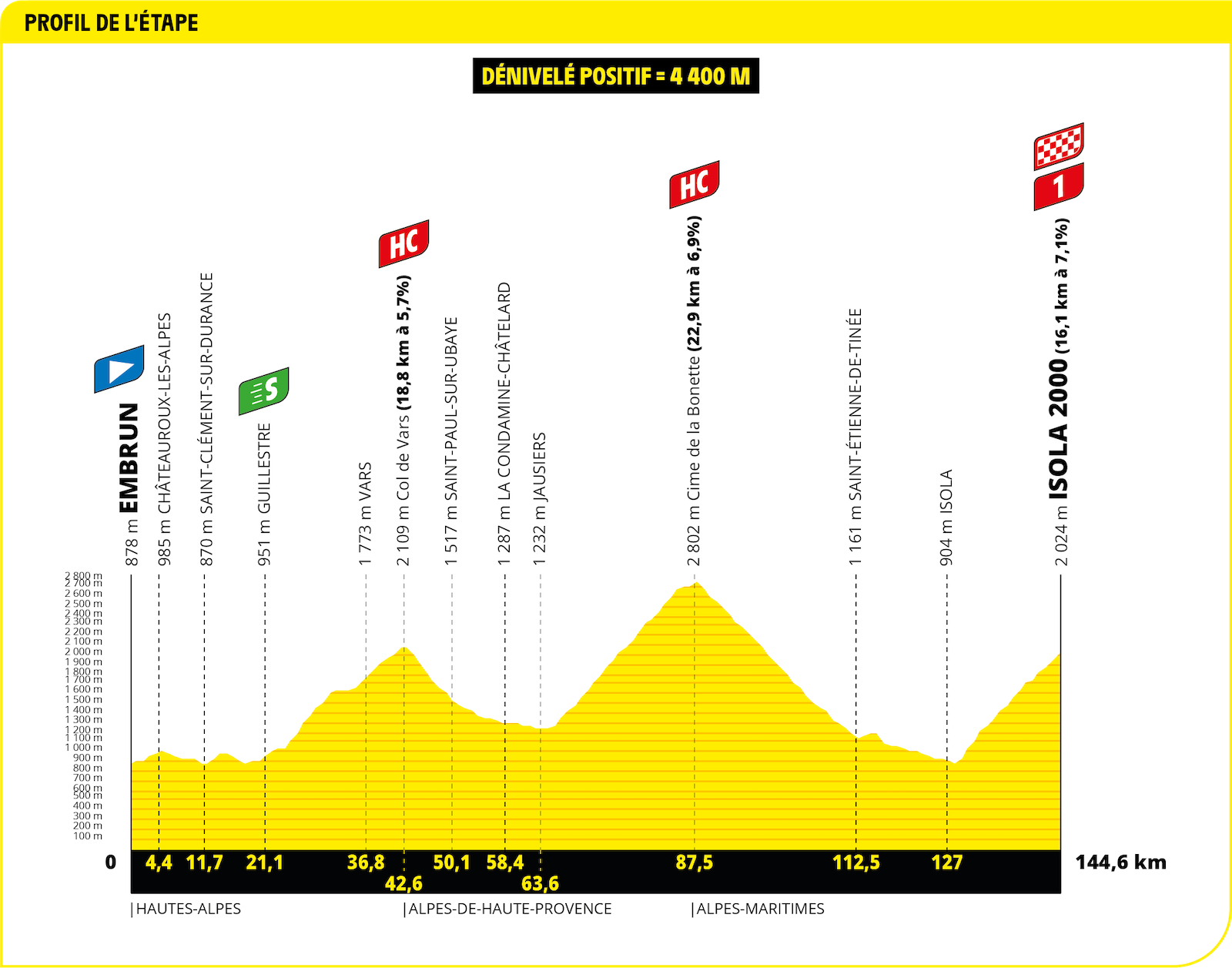
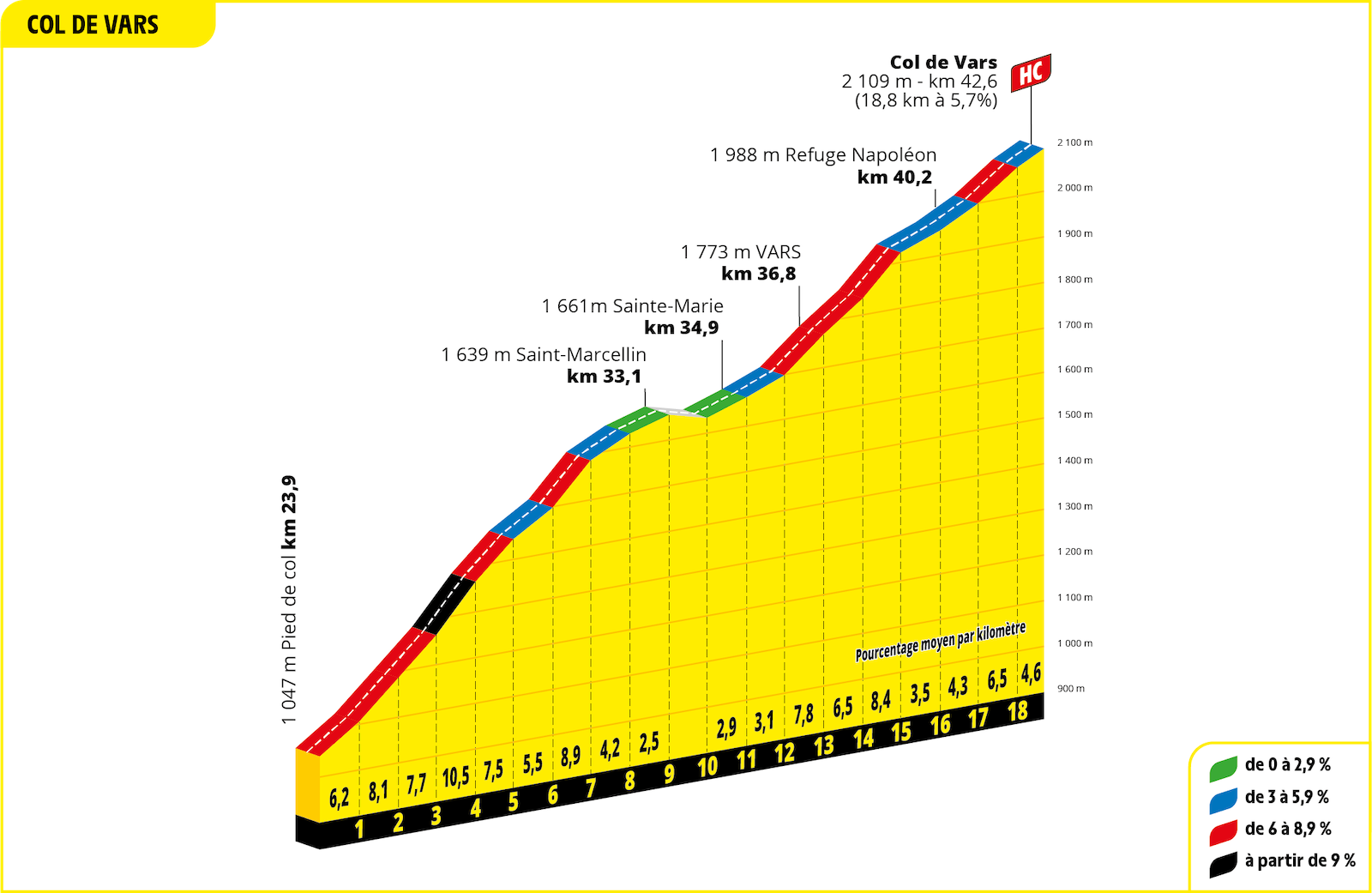
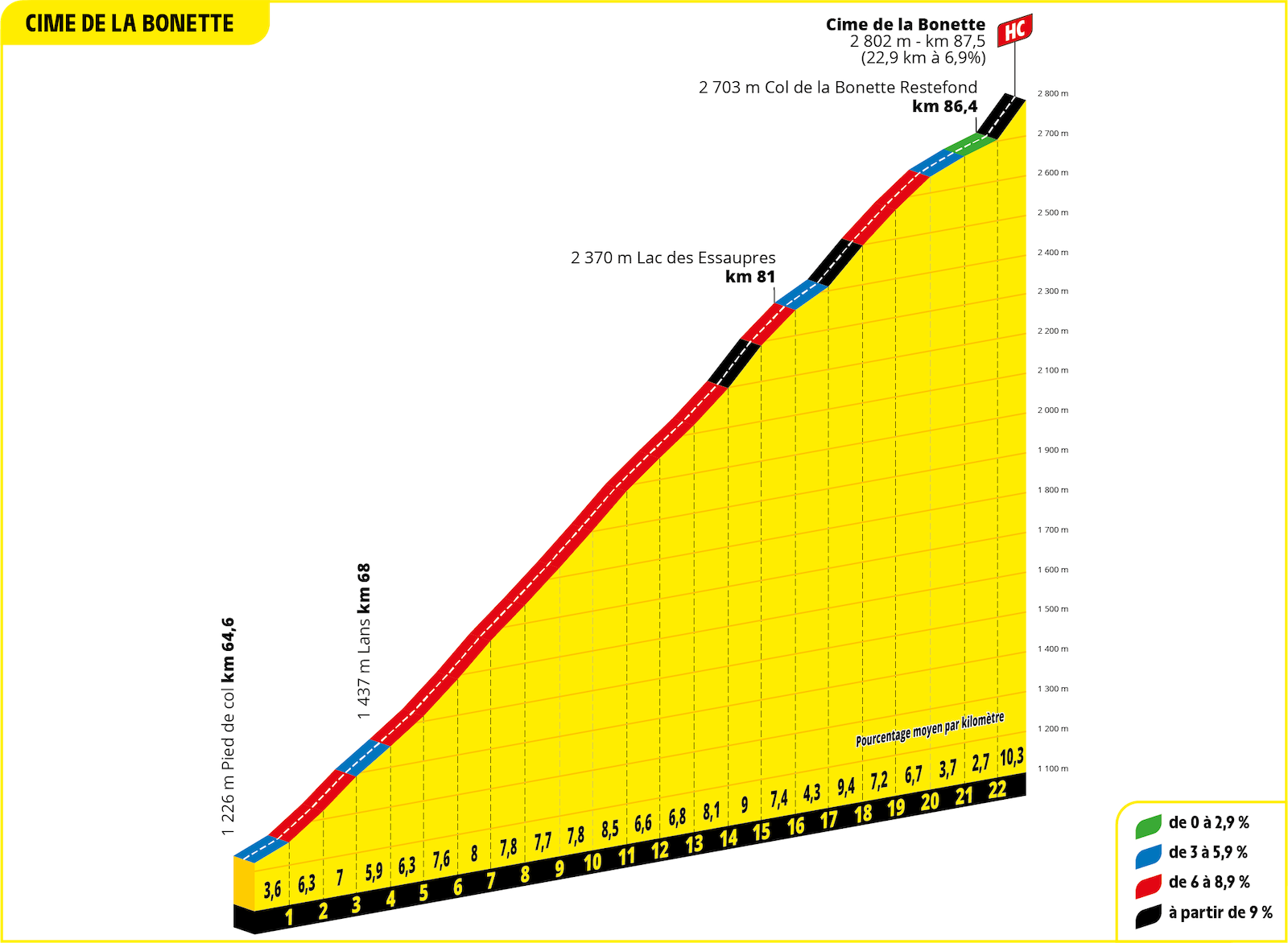

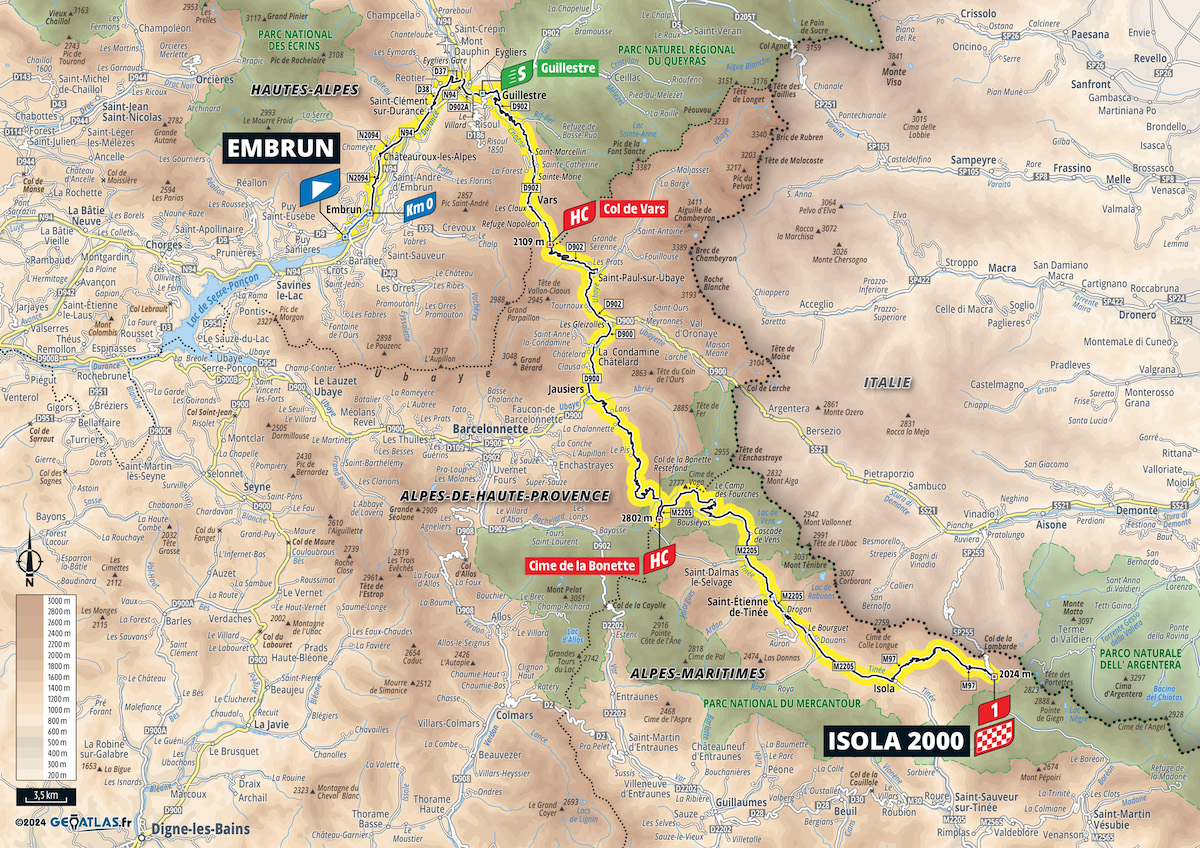
The final mountain stages will start on stage 19, with a high ride in the southern Alps. Although the stage is only 144.6km long, the riders will climb 4,400 metres in total. Starting in Embrun, the peloton will head northeast to Guillestre for the intermediate sprint before turning south to tackle three above 2,000-metre climbs starting with the Col de Vars (18.8km at 5.7%).
The biggest test will be the summit of La Bonette, the highest road in France at an altitude of 2,802 metres. The 22.9km climb includes steep pitches of over 9% and tops off with a final kilometre at 11% gradient. A long valley road will follow before the climb to Isola 2000 for a 16.1km climb to the finish.
Stage 19 Sprints
- Intermediate sprint, km 21.1
Stage 19 Mountains
- Col de Vars (18.8km at 5.7%), cat. HC, km 42.6
- Cime de la Bonette (22.9km at 6.8%), cat. HC, km 87.5
- Isola 2000 (16.1km at 7.1%), cat. 1, km 144.6

Barry Ryan was Head of Features at Cyclingnews. He has covered professional cycling since 2010, reporting from the Tour de France, Giro d’Italia and events from Argentina to Japan. His writing has appeared in The Independent, Procycling and Cycling Plus. He is the author of The Ascent: Sean Kelly, Stephen Roche and the Rise of Irish Cycling’s Golden Generation, published by Gill Books.
Latest on Cyclingnews
-
Tour of Norway 2026 cancelled after 'surprising cuts' from government
'We will do everything we can to ensure that this is a temporary setback, not the end' says race general manager -
Jack Haig signs for Ineos Grenadiers as Sam Welsford also appears to be at team's training camp
Australians could both be riding for British team in 2026 as roster nears completion -
Mathieu van der Poel miraculously avoids crash in training sprint against amateur – video
Expert bike handling saves Dutchman from pre-season disaster in Spain -
First new kits of 2026 revealed as teams warm up for the start of the season
Groupama-FDJ United and Cofidis drop new jerseys as Ineos Grenadiers riders spotted in interesting new design
